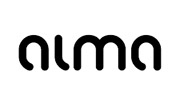Worldwide Mobile Phone Market Grows 29%.
April 13, 2004
The worldwide market for mobile phones slowed slightly in the first quarter of 2004 due to expected seasonal effects, but still managed to post impressive growth year-on-year. According to IDC’s Worldwide Mobile Phone QView, worldwide mobile phone shipments decreased sequentially by 5.9% in 1Q04 and increased by 29.3% year-over-year to 152.7 million units. Additionally, the nascent market for converged mobile devices, or “smartphones,” posted a sequential decrease of 5.5% but a year-over-year increase of 85.8%.
Among the top vendors, Nokia experienced the sharpest sequential drop with a decrease of 19.2% resulting largely from a lack of mid-range handsets. As carriers looked for alternative sources to fill consumer demand, vendors such as Motorola and Samsung were able to gain significant market share at Nokia’s expense. However, despite the loss in market share, Nokia remains firmly positioned as the market leader in both the mobile phone market and the converged mobile device market.
“Despite the anticipated seasonal effects of the post-holiday first quarter, worldwide mobile phone manufacturers were able to produce significant year-on-year growth on the strength of mid-range handsets featuring color screens and cameras,” said David Linsalata, analyst in IDC’s Mobile Devices program. “Additionally, the market for converged mobile devices, or ‘smartphones,” demonstrated strong growth potential as both enterprises and consumers continue to show interest in improved devices combining data and telephony capabilities.”
With 1.5 billion wireless subscribers expected worldwide by the end of the year, IDC expects the worldwide mobile phone market to surpass 595 million units shipped in 2004. Through 2008, the market will continue to expand until it reaches nearly an all-replacement sales scenario towards the end of the decade with over 800 million mobile phones shipping annually. According to IDC’s Worldwide Mobile Phone 2004-2008 Forecast and Analysis (IDC #31080, April 2004), sales of 2.5G mobile phones will drive market growth for the next several years with sales of 3G mobile phones finally surpassing the 100 million annual unit mark in 2007. The converged mobile device market, surpassing 20 million units shipped worldwide in 2004, will be dominated throughout the decade by Symbian-powered devices – Microsoft and PalmSource are expected to mount a long-term challenge, but will have greater difficulty gaining exposure to mainstream mobile phone market volume.
“A compelling case for 3G adoption by consumers has yet to be made. Simply put, there are very few reasons to drive the vast majority of consumers to buy a new 3G mobile phone,” said Alex Slawsby, senior analyst in IDC’s Mobile Devices program. “As a result, we expect converged mobile devices, powered by Symbian and Microsoft, as well as 2.5G color screen and camera phones to be the core of the overall market for several years.”
Vendor Highlights more
Nokia – Although Nokia was able to post 17.2% year-over-year growth, shipments dropped 19.2% sequentially, resulting in a drop in market share of 4.8% to 29.3%. The decrease came as a result of a product mix weighted towards entry-level phones and lacking in midrange color and camera phones, areas that proved to be growth catalysts for other companies. Nokia plans to regain its market share through a combination of price discounts and the launch of approximately 40 new handsets this year.
Motorola – Motorola posted record shipments in 1Q04, bringing its formerly slumping market share up 2.7% to 16.6% in 1Q04. On the strength of a 51.5% year-over-year shipment increase driven by sales of GSM camera phones, Motorola boosted its market share to 16.6% of the worldwide mobile phone market. Going forward, the company hopes to extend its recent momentum with a range of new mobile phones focusing on mobile music, broadband, and productivity, scheduled to come to market this year.
Samsung – Samsung continued its steady march to overtake Motorola with a year-on-year shipment increase of 88% in 1Q04, increasing Samsung’s market share to 13.1%. Samsung’s rise came on volume sales of its premium products such as its camera phones and camcorder phones.
Siemens – Despite a year-over-year shipment increase of 60%, Siemens fell 16% sequentially, resulting in a 1% drop in market share to 8.4%.
Sony Ericsson – After two quarters at the number 6 position, Sony Ericsson re-entered the top 5 with a 63% year-over-year shipment increase on increasing momentum from its mid and entry level products. However, Sony Ericsson beat LG Electronics by only 250,000 units, and LG’s increasing focus on GSM phones may threaten Sony Ericsson’s stay in the top 5.
For more information at http://www.idc.com




























